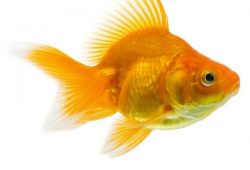Koi Quarantine Tank
In the article it is spoken in detail about Koi Quarantine Tank. New Koi fish usually suffer from many adaptability problems when they are transferred from the pond to your tank. They are also in a unstable state suffering from many diseases. Putting them in a quarantine tank for about 2 – 4 weeks will ensure that they are stabilized. This is the time when they are effectively under more focus and their food too should be taken care of.

The conditions inside the quarantine tank should be similar to that of the final tank, where they have to be placed and not drastically different from the conditions of the pond. Otherwise, they will have to go through the same pains of adjustment again and again. The quarantine facility is also important to observe the Koi for any signs of bad health. The special filtration system should help maintain the conditions. This way you can be sure that you are not affecting the healthy fish inside the pond.
A quarantine tank needs to be of a decent size up to 30 inches deep. The volume preferred is for 100 gallons and the most common ones used are the vinyl tanks with PVC frames, the collapsible vats or the GRP tanks. The quarantine tank needs a good filtration system. The pool should be aerated well with the pump or aeration device. The tank shouldn’t be placed in the sun and you must provide a lid since new fish try to jump out. You may need a water conditioning system and a heater if the water if it is lower than 72 degrees F.
The quarantine tank being a place of observation and it is good to keep a watch on the fish. They must not be overfed or over medicated. You should also avoid large changes in the water quality of temperature. You must also check regularly to ensure that the conditioning system, the aeration pump etc. all work perfectly well.
In temporary quarantine tanks people avoid biological filters because there isn’t sufficient time to develop it and it turns out to be a waste once the fish is transferred to its rightful place. However, growing nitrifying bacteria and installing a biological filtration system works well for permanent tanks. This will also ensure that you can cut down on the water changes. A by-pass setup is also required because many times, like in hospital tanks, you may need to treat the koi with treatment to kill the nitrifying bacteria.
While observing the fish, it is good to take an attentive look at the gills and the fins for any discoloration. Similarly, you should pay attention to demeanor and general fish behavior for signs of infection. Often you may need to treat them for parasites or wounds of a minor scale. You should also observe for anchor worms and lice that can be found by normally looking at the fish. In all these cases, you need to treat the infected fish carefully, so as to not infect others around it. This can be done by using separate nets and equipment.



